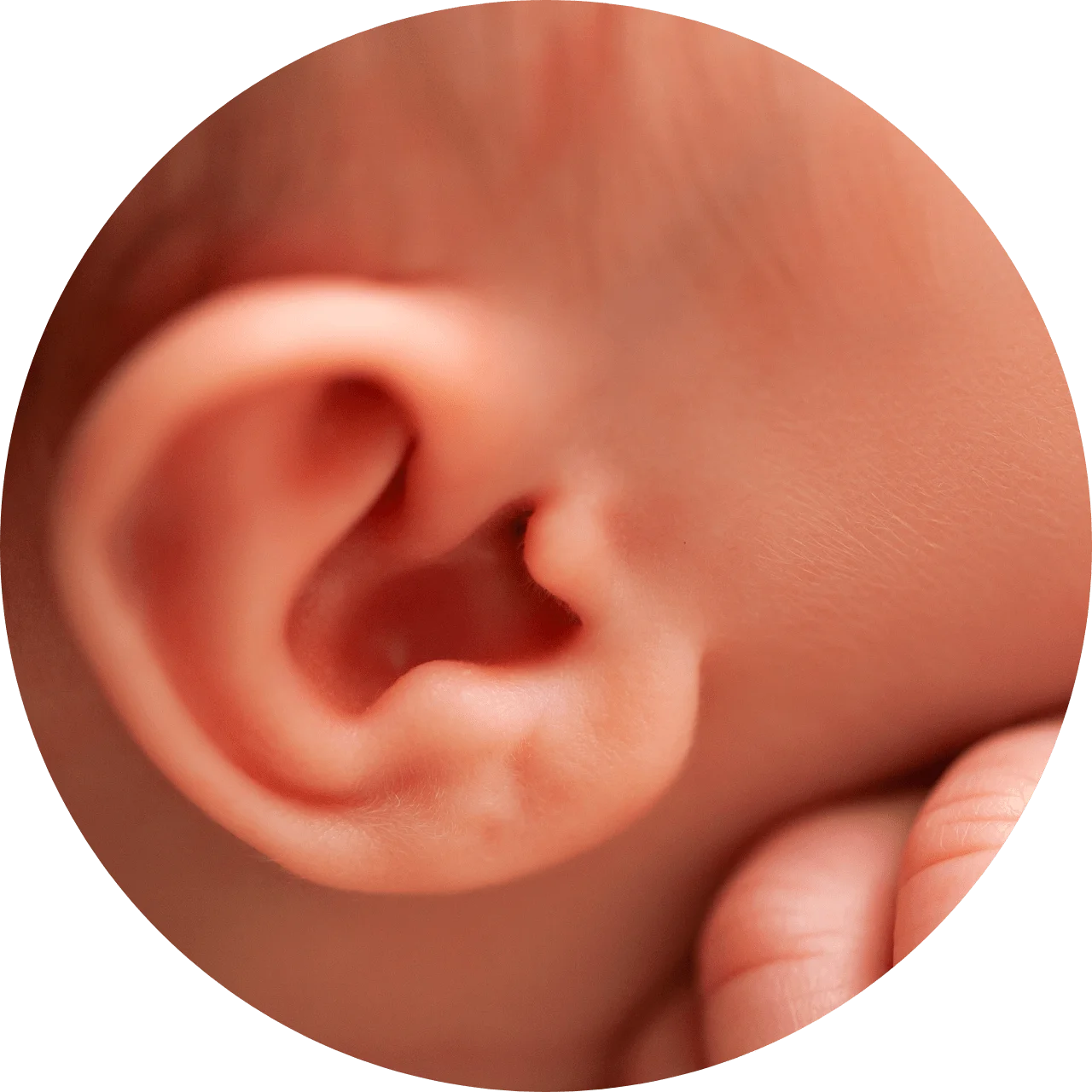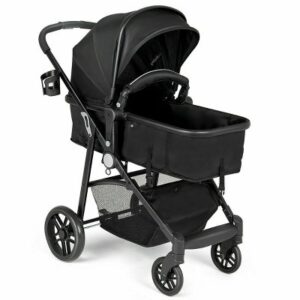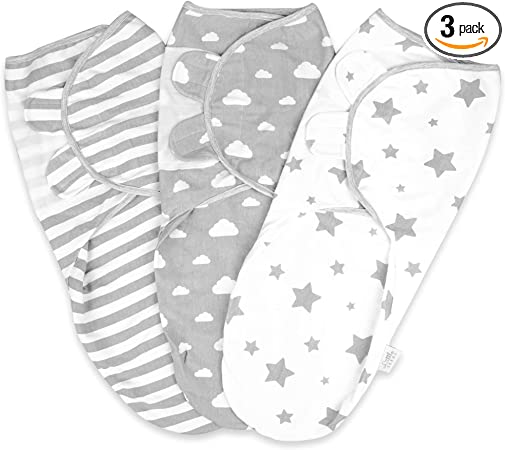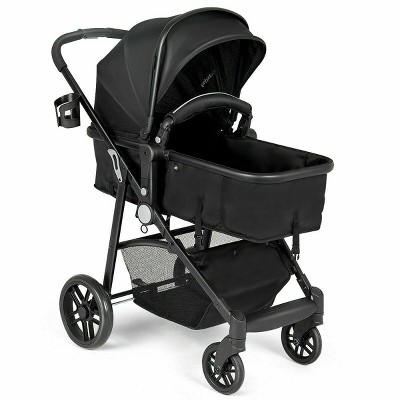3-Month-Old Baby
3-Month-Old Baby
So much has happened in so little time! Your baby has gotten a whole lot bigger and your smartie's brainpower is increasing every day too.
Main Topics
Highlights
Your baby has reached month 3, the beginning of what some seasoned parents may describe as the enchanted months.
For the next several weeks, your cute bundle of smiles will probably be pretty happy (often, hopefully!), sleeping for longer at night (sometimes!), and not yet independently mobile (less stressful for parents).
In other words, your baby will be a little treasure to be around for a good bit of the time. Ahhhhh.
Here’s what else to expect this month.
Your 3-month-old baby's development
Month 3
Baby’s Development

Your baby will most likely be able to lift the head 90 degrees — thanks to all that tummy time practice you’ve been providing.
Other milestones to look for this month: She’ll be able to laugh out loud and can probably anticipate being picked up when she sees you reach out.
She’ll also probably be able to roll over and turn in the direction of a sound.
Many babies this age will have expanded their speaking repertoire to be able to string together vowels and consonant sounds — like “ah-goo.”
And all babies love to play with their favorite toys — play gyms and activity mats, of course, but also sensory toys that trill, squeak, tweet or rattle when pressed or shaken.
High on the fan favorite list are fun things that play music, especially in reaction to your baby’s movements. And because your little one is reaching for toys now, she’ll especially love any plaything she can grab.
Be sure to continue reading to your curious cutie and watch how captivated she is by the pictures as you turn the pages.
At a Glance

Sleeping basics
Babies up to 3 or 4 months old need 14 to 16 hours of sleep in a 24-hour period, usually waking every two to four hours to eat. They'll probably be on the longer end of that range by the 3- or 4-month mark, though every baby is different.

Feeding basics
Breastfed babies should eat as much as they want at this age, but a general rule of thumb is 4 ounces of pumped breast milk or formula every three to four hours (give or take) over a 24-hour period.

Did you know?
Babies this age love hugs, which can help with cognitive development, research shows.
Your 3-month-old baby's growth

Does your baby seem to be gaining a little too much weight, or a little too little?
Before you jump to any conclusions about your little one’s rate of growth, chat with your doctor about whether she is actually overweight and not just baby-appropriately rounded … or actually underweight and not just genetically predestined to be on the slender side.
For an accurate assessment, talk to your pediatrician and take a look at your baby’s weight in relation to length on the height-weight chart.
If both the height and the weight are on a similar curve, it could be that your baby is just bigger or smaller than average.
But if your little one’s weight seems to be moving up faster than baby’s length, or vice versa, your doctor will let you know (and you can ask for advice too). Your baby may be picking up a few too many pounds too quickly … or not putting them on quite quickly enough.
Why does it matter? Babies who gain weight too rapidly in the first six months may be at an increased risk of obesity by as early as age 3. And babies who stay overweight through age 4 are at increased risk of becoming overweight adults.
So once your doctor confirms that your baby needs to slow down a bit, you’ll want to put the brakes on the fast-paced growth by not overfeeding your little one.
In other words, don’t always soothe baby with a bottle or the breast whenever she’s fussy. Try other sources of comfort and realize those cries may not always mean she’s hungry.
Also try not to push baby to finish the bottle or the other breast if she signals she’s full. And make sure your baby gets plenty of time to move around while she’s awake. Resist the urge to strap baby into the car seat or swing most of the day.
If, on the flip side, your baby seems to be on the too-lean side (and the doctor agrees), you’ll probably need to step up your feeding efforts so she can step up that weight gain.
Make sure your little one is eating frequently enough and getting enough milk during feedings. Some babies are too busy or too sleepy to demand regular meals, and others skimp on feeds because they’re just as content to suck on a pacifier.
Your 3-month-old baby's health

Baby eczema
If your little one has dry, flaky, rashy skin, she could have infant eczema. In babies, rashes usually start out on the scalp and face. Children with lighter pigmented skin tend to have pink or red version, while babies with darker pigmented skin tend to have a red-brown, purplish or grayish rash.

Ear infections
Babies get ear infections when they catch a cold or other upper-respiratory infection, which causes the lining of one of the ear tubes to swell, become congested, and accumulate fluid.

Baby sunscreen rules
Babies this age should be kept out of direct sunlight, but if you can’t find a spot in the shade, it’s okay to apply a little bit of baby-safe sunscreen with an SPF of 30 to 50 to your little one's face, back of the hands and tops of the feet.

COVID-19 symptoms in babies
Most babies seem to develop fairly mild cases of COVID-19, and some of the symptoms — runny nose, sneezing, cough — are similar to those of the common cold. But infants may have higher rates of more serious illness than older kids.

Skin rashes
Bug bites, allergies and viral and bacterial infections can all cause itchy rashes that can range from scaly or pimply to oozy. Rest assured, most skin rashes are no big deal, and will go away on their own or with a little help from the doctor, who may suggest a prescription or OTC cream or medication.
Postpartum & new baby tips
She may not get an actual diploma, but this month marks your baby’s official graduation from newborn to infant status. She’s still got a lot to learn (obviously!), but one thing she definitely realizes now is there’s more to life than eating, sleeping and pooping!
These days, she’s likely to stay awake for longer stretches during the day and (with any luck) stay asleep for longer at night too.
Your baby is no doubt making you chuckle too, and she’s probably giggling by now (bring on the raspberries!) as well as bringing those little paws together (clap hands!).
Some babies may even begin to bear a bit of weight on their legs, but don’t worry if yours doesn’t — she’s not ready and that’s just fine.
If you’re struggling to find time to fit in exercise, be easy on yourself. It can be as simple as taking out the stroller.
Just make sure you’ve gotten the green light from your practitioner before starting back into your exercise routine, and never exercise to the point of exhaustion (you’re probably exhausted enough from the lack of sleep!).
Besides helping you with weight loss after delivery, a brisk walk with baby is a great way to meet other parents, stay healthy and clear your mind.
One thing your 3-month-old baby is definitely ready to do is show you that budding personality.
She may be serious, silly, gregarious, persnickety or determined — the bottom line is she is who she is and she’s all yours!
Don’t give in to the urge to compare your little one with other babies. Every baby is different and special!
Online searches can be a good way to find child care, but the best way to find out about top-notch babysitter or nanny candidates or reputable day care centers is often word of mouth.
Don’t be shy about asking parents if they can recommend a great infant caregiver. Nursery school teachers and your child’s pediatrician are also good sources, as are bulletin boards at your doctor’s office, library or house of worship.
If you do go online, get names of licensed day care centers near you from your state’s Web site (usually, the two-letter postal abbreviation followed by .gov). And then arrange a visit with your little one.
Looking for a nanny? Agencies on the Web sometimes sell lists of pre-screened candidates — though you should always look into references yourself and make sure there’s been a thorough background check, as well as doing in-person interviews (with your baby!).
Aside from your usual care and feeding of your baby, your job now is also to stimulate your little one’s intellectual growth.
That’s less complicated than it sounds — singing and talking are two wonderful ways to help a baby’s brain shift into high gear.
Some new twists to try:
- Use different tones of voice as you speak.
- Sing songs with surprise endings — “Pop Goes the Weasel” is an oldie but goodie.
- When you tell a story or recite a nursery rhyme, insert your baby’s name for a character’s name so she gets used to hearing it in a variety of tones and situations.
- Another great way to increase baby’s awareness of the world is to take your little one on expeditions. Go for a walk and watch baby respond with glee as she sees leaves move and birds fly, or listens to the sounds of dogs, cars and just about anything that makes a noise.
At playtime, those little hands and fingers are your baby’s still favorite toys, but now she might be able to do even more with them.
During tummy time, which she should be becoming a pro at by now, try rolling a ball about 2 feet in front of your baby. With a little practice she’ll soon be able to coordinate hand-and-eye movements to reach for it.
Now that your baby is 3 months old, she’s developmentally ready to be put on a schedule. Yay!
But don’t insist on a minute-by-minute plan. A too-strict schedule can be too much, while none at all is also stressful and hard on the whole family.
How can you establish a routine that works for everyone? Try to introduce a few anchors into your baby’s day: a special chair for nursing, for example, a walk after lunch, and bath and bedtime at the same time and in the same way each evening.
If she’s feeding more frequently than you’d like, gradually stretch out the between-meal intervals by distracting baby with a song, a toy or a book.
If she frequently falls asleep without finishing a feed, try to wake your baby up until it’s over so you won’t have to start again so soon.
The goal: Help your little one ease into a pattern that’s not too strict or too loose, but just right.
Items Recommendation
-

Onesies
Br50.00Add to WishlistAdd to cartAdd to Wishlist -

Stroller
Br32.00Add to WishlistAdd to cartAdd to Wishlist -
Sale!

Baby bottle
Br25.00 – Br30.00Add to WishlistSelect options This product has multiple variants. The options may be chosen on the product pageAdd to Wishlist













Add a Comment